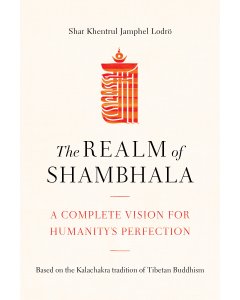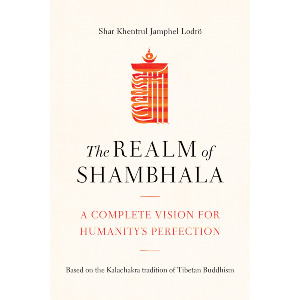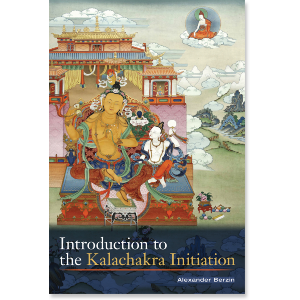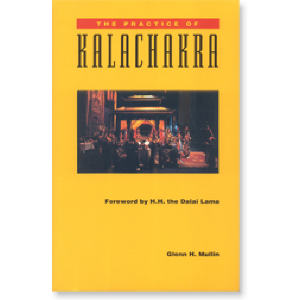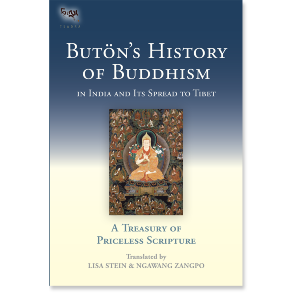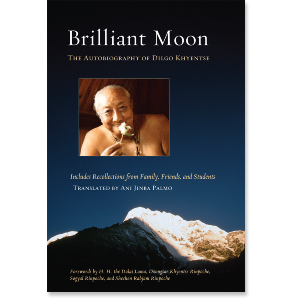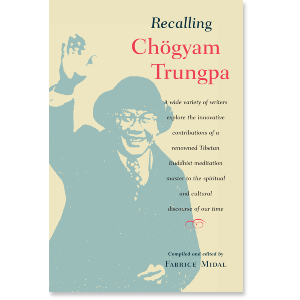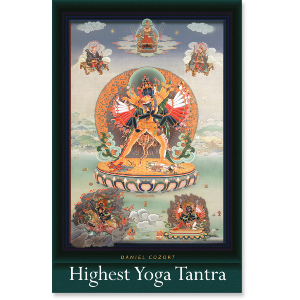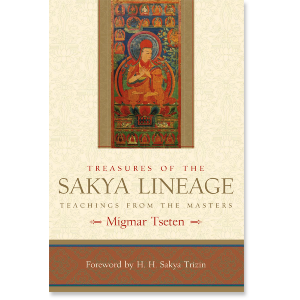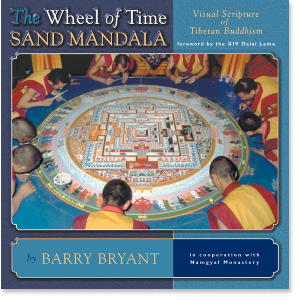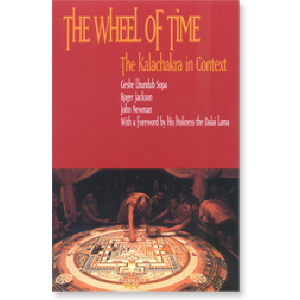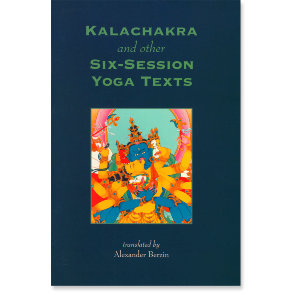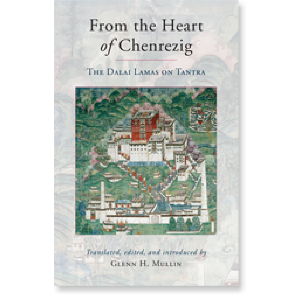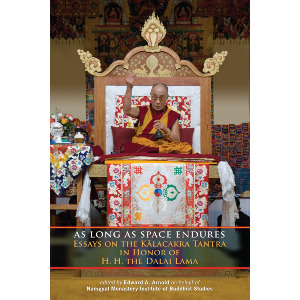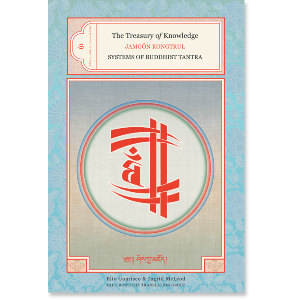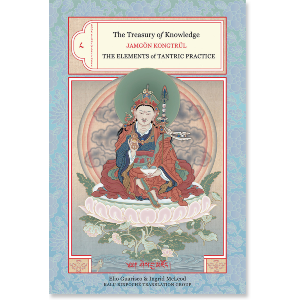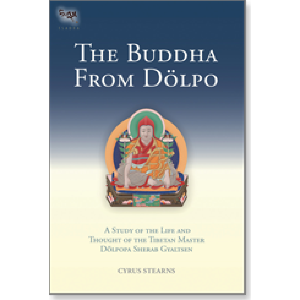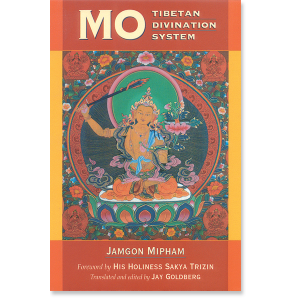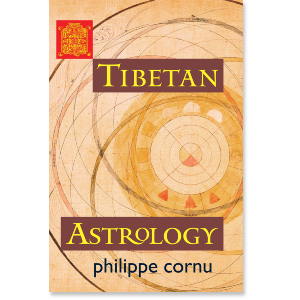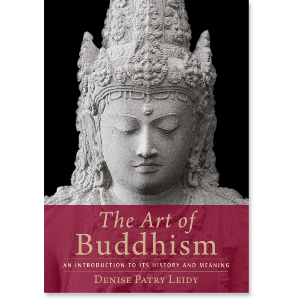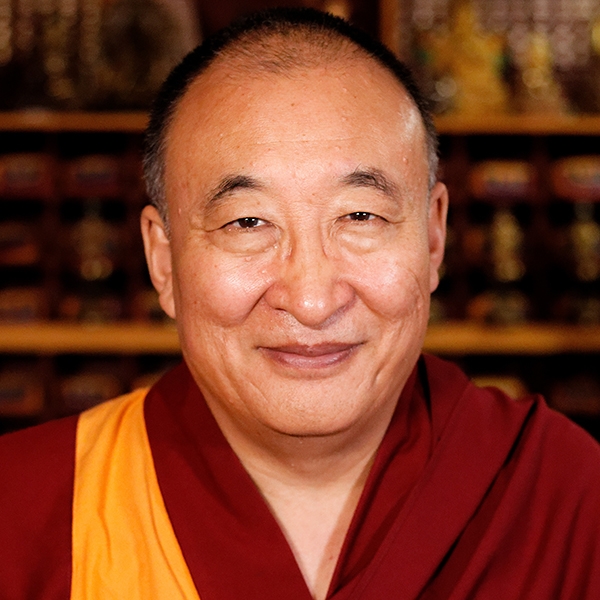

Shar Khentrul Jamphel Lodrö
Shar Khentrul Jamphel Lodrö was born and raised in Tibet. He has spent over thirty years studying with a wide array of masters from all the major traditions of Tibetan Buddhism and considers his approach to Tibetan Buddhism to be nonsectarian. While having developed a deep respect for all spiritual traditions, for his personal path, he chose to specialize in the Kalachakra teachings. Khentrul Rinpoche has authored several books that detail the complete Buddhist path of Kalachakra. Based in Melbourne, Australia, Rinpoche dedicates his time to teaching students from around the globe.
Shar Khentrul Jamphel Lodrö
GUIDES
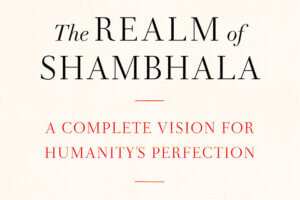
Realize the Ultimate Manifestation
An excerpt from The Realm of Shambhala
The Society of Shambhala
To be born in Shambhala, one must have produced a significant amount of merit through intensive spiritual practice. This means that every citizen starts their lives endowed with a wealth of virtuous qualities. In particular, they all have phenomenal propensities for love and compassion.
Each child is born to a human mother, but, unlike ordinary birth, there is no pain. While both parents feel an enormous amount of love for their children, they do not view them as their own; instead, they love all children equally, regardless of who physically gave birth to them. In this way, family boundaries are based primarily on proximity and not so heavily on biology. As long as a child needs them, there are adults who are capable of offering support and nurturing them.
The people of Shambhala focus all of their energy on developing their spiritual capacities.
From a very early age, children are introduced to the spiritual views emphasized in their particular region. While all spiritual systems in Shambhala are considered to be a part of Kalachakra, different methods are recognized to be more effective for certain types of people. As a result, the specific propensities of a child will determine where exactly in Shambhala they are born; therefore, each child is guaranteed to encounter the spiritual practices best suited for their needs.
Due to their extremely well-developed spiritual qualities, children progress very quickly along their respective paths. Like riding a bicycle, they relearn much of what they were taught in previous lives and so are able to develop deep levels of meditative absorption at a very young age. These advanced states of mind bestow a wide variety of mundane attainments, or siddhis, on the practitioners, allowing them to perform extraordinary feats, such as moving over great distances in just a few moments or manifesting many types of psychic capacities. Since food, clothing, and shelter are available in abundance, there is no need for anyone to work for money or for people to trade in goods. No markets or economies are required. Consequently, the people of Shambhala focus all of their energy on developing their spiritual capacities.
The leaders of the various kingdoms do not need to impose laws on their people.
The human body in such a society is viewed as a sacred and powerful support for achieving realizations. Bodies are not regarded on the basis of desire or lust; rather, people learn how to use their sexuality in a constructive and beneficial way. Sex itself is not seen as something to be ashamed of nor as something to be attached to. It is something to be respected and valued as an important aspect of spiritual development. Sexuality is rooted in love and compassion and, therefore, it is never used as a means to control or dominate another.
Within this culture, the leaders of the various kingdoms do not need to impose laws on their people and do not need to rule through might and power. In each of the ninety-six kingdoms, there is a governor who acts as a spiritual role model and mentor for the people within their kingdom. The governors do this by achieving remarkable levels of realization demonstrating the power of spiritual practice. These beings are like shining lights that dispel the darkness around them, showing the way forward toward deeper truths.
While individuals may grow up in one kingdom of Shambhala, they are not attached to the geography nor to its culture. When the time is right, they often travel to other kingdoms where they continue their studies and advance on their spiritual path. The relationships people form are not based on belonging to this or that group but are closely tied to their level of spiritual development. While everyone is considered one family, one’s closest relationships are usually with those who are practicing the same methods.
Everyone works together to help one another actualize their potential.
Another common relationship is between students and teachers. Everyone in Shambhala recognizes the responsibility of those with higher realizations to guide and support those with less. As there is no sense of competition, everyone works together to help one another actualize their potential. With such highly developed levels of love and compassion, trust comes easily, so there is no fear of being taken advantage of or being manipulated by one’s teacher.
As individuals progress through each stage of their path, they slowly migrate from the outer kingdoms toward the center. Like all rivers flowing into the ocean, everyone eventually arrives at the base of Mount Kailasha. After ascending the mountain, they reach the pleasure groves where they are initiated into the enlightened mandala— the symbolic representation of the ultimate nature of reality. Then, through the uncommon yogic practices of Kalachakra, they enter the city of Kalapa where they are eventually granted an audience with the king. There, they experience the face of Kalachakra and realize the ultimate manifestation of Shambhala.
Making Sense of This Description
When reading a description like this, you may find certain ideas difficult to accept, such as the sheer vastness and scope of this realm. How could such a huge place exist on this planet? Where are all of these cities? Shouldn’t we be able to see it from space? All of these types of questions arise when the mind tries to project a fixed understanding of reality onto the flexible reality of the subtle mind. To overcome this problem, it can be helpful to consider a few alternative ways to understand each of the above features.
First, consider the impassable mountain range that acts as a barrier to the outside world. These mountains represent the fact that Shambhala cannot be experienced by a gross level of mind. There is absolutely no way to enter Shambhala without first withdrawing the mind from its physical conditioning. Only by establishing a subtle level of mind can the subtle experience of Shambhala manifest.
Shambhala is a karmic realm where everyone experiences its reality in a unique way based on their own karmic propensities.
Second, consider the way Shambhala is divided into different regions. Since we have already transcended our physical limitations to enter Shambhala, these divisions should not be considered purely geographic in nature. Rather than thinking of them as only spatial divisions, we can also consider them divisions based on karma. Remember that Shambhala is a karmic realm where everyone experiences its reality in a unique way based on their own karmic propensities. If we group the different realms of experience on the basis of their similarities, we can begin to see how clusters can form into regions, then into kingdoms, and finally into cities. This naturally manifesting organization ensures everyone is surrounded by those who can most effectively support them.
Third, consider the relationship between Kalapa and the rest of Shambhala. The fact that Kalapa is raised up above the other kingdoms indicates that it is subtler in nature. From this perspective, no matter where an individual is born in Shambhala, no matter what methods they use, all roads eventually lead to the center. We can think of these outer regions as representing the provisional truths that are used for a time in order to bring one closer to the definitive truth. As individuals ascend toward the throne room, they refine their experience and unveil more of their ultimate nature. In this way, Shambhala’s geographical structure emulates an individual’s spiritual progression toward enlightenment.
These are just a few examples of different ways to understand the Sublime Realm of Shambhala in a more flexible and meaningful way. Always remember that the bodhisattvas created this realm out of their infinite compassion for us and that every aspect of its description can be experienced when the right causes and conditions come together.
The Definitive Meaning of Shambhala
Through the provisional meaning of Shambhala, we are able to encounter increasingly more conducive conditions for engaging in authentic spiritual practice. Through such practice, we can clear away the many layers of obscurations that prevent us from realizing our ultimate nature. This process of purifying the mind can be considered preliminary as it prepares the ground for us to work directly with the definitive meaning of Shambhala.
As the dualistic mind is purified, awareness grasps less and less.
According to the Kalachakra, the definitive meaning begins to arise the very moment the dualistic mind starts to dissolve. At such a time, a yogic practitioner will experience two aspects of the definitive meaning that can then be used as a basis for nurturing one’s realization: empty forms and great bliss. As the dualistic mind becomes weaker and weaker, the true nature of reality begins to manifest more clearly within experience. The practitioner comes to realize that the ultimate nature is not a mere void but is in fact filled with infinite possibilities. Here, empty refers to the complete absence of any conceptual projection onto reality, while form refers to the enlightened qualities that are manifesting. In other words, this is the appearance of the natural luminosity of reality.
Every moment of experience arises in coemergence with an awareness of reality. For an ordinary being, awareness experiences a distorted reality as a result of grasping onto layers of misconceptions. As the dualistic mind is purified, awareness grasps less and less. This incredible mind of nongrasping is then experienced as increasingly more intense levels of bliss. When fully refined, this bliss becomes immutable, which means that the awareness is completely free from all forms of grasping and, therefore, is not moved by any appearances in the mind.
It is important to understand that merely realizing one of these aspects is not the same as perfecting it. A direct realization is momentary in nature and, therefore, requires a process of familiarization in order to fully integrate that realization into one’s experience. When a practitioner first encounters these aspects, he is presented with a phenomenal opportunity. If he is able to abide in that experience, he can use it to unveil increasingly profound layers of experience by clearing away the subtlest traces of habitual propensities. With perseverance, he will eventually remove all forms of obscuration and subsequently manifest as a fully enlightened being.
Induced realization can be produced through the practice of an authentic spiritual path.
With this understanding, the question then arises: “How can I experience the definitive meaning?” There are essentially two realms of opportunity: natural realization and induced realization. Natural realization is what occurs in the lives of every sentient being when there are specific moments where the dualistic mind dissolves and the very subtle level of clear-light mind naturally manifests. If a practitioner can develop sufficient awareness of these very short realms of experience, it is possible to use them as a chance to realize the definitive meaning. For induced realization, instead of waiting for the process of dissolution to occur naturally, through the use of advanced yogic techniques, the conditions can be created to induce the dissolution process. While this method requires considerable effort in order to train the mind, it provides a greater degree of control, allowing the practitioner to extend the number of opportunities to realize the ultimate nature.
While induced realization can be produced through the practice of an authentic spiritual path, natural realization occurs only during the transitional process between one life and the next—what is known as the bardo. Normally, this process occurs without any sense of control or awareness. Therefore, the opportunities for realization are virtually nonexistent for an untrained mind. In order to make use of this period, we need to develop our capacity to maintain awareness throughout the dissolution process, which occurs at the time of death.
Share
Related Books
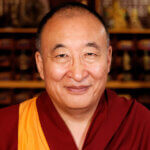
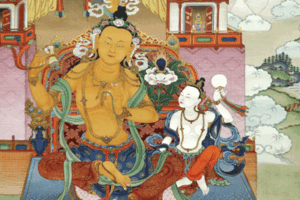
Kalachakra Tantra Reader’s Guide
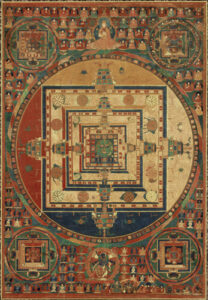
What Is Kalachakra Tantra?
The Kalachakra, or “Wheel of Time,” tantra and cycles of teachings and practices are, on the surface, well known among practitioners and those interested in Tibetan Buddhism. Yet it is considered one of the highest teachings of tantra—a highly complex one where initiates take many years accomplishing the practice. The visualization for an advanced practitioner involves 722 figures in the mandala.
One of the reasons for its notoriety is that His Holiness the Dalai Lama has bestowed the initiation—which takes several days to complete—dozens of times in over ten countries to literally millions of people. For most in attendance it is considered a great blessing and not a springboard into the practice itself. As the Dalai Lama has said:
“The higher meditations of the Kalachakra tradition can be practiced only by a select few. But because of past and future events, and in order to establish a strong karmic relationship with Kalachakra in the minds of the people, there is now a tradition of giving the initiation to large public gatherings.”
Buton’s History of Buddhism in India and Its Spread to Tibet
$34.95 - Hardcover
$39.95 - Paperback
By: H.H. the Fourteenth Dalai Lama & Dilgo Khyentse Rinpoche & Ani Jinba Palmo & Shechen Rabjam
Kalachakra Tantra as a Main Practice
There are many practitioners in the four main Tibetan schools, as well as in the lesser known Jonang tradition, for whom Kalachakra is their main practice, not just a source of connection and blessings. The Gelug and Sakya traditions were heavily influenced by Buton Rinchen Drub. Some of this is detailed in Buton's History of Buddhism in India and Its Spread to Tibet. The Kagyu and Nyingma traditions draw heavily from the Jonang. Some of the more contemporary masters include Jamyang Khyentse Chökyi Lodrö (whose biography was published in early 2017 by Shambhala), Penor Rinpoche, and Dilgo Khyentse Rinpoche. Some of the stories about Khyentse Rinpoche’s connection with the Kalachakra—in particular, the teaching he gave to a large group including His Holiness the Dalai Lama—form a very moving section of his biography, Brilliant Moon. When asked to give a formal elaborate teaching at a Long Life ceremony for the Dalai Lama attended by the heads of all the schools and many other lamas, Tenga Rinpoche relates the following story of Khyentse Rinpoche:
“The next morning when the time came to speak in front of His Holiness the Dalai Lama and the whole assembly of lamas from the four schools of Tibetan Buddhism, speaking for over an hour in an unimpeded flow like a river, Khyentse Rinpoche gave a most detailed and profound explanation of the universe according to the Kalachakra Tantra, in which he mentioned an immense number of quotes, which he obviously seemed to know by heart. At the end of the discourse, he finally approached the throne of His Holiness and offered the mandala plate into His Holiness’s hands. Then he offered the eight auspicious substances, and when offering the conch, a loud thunder crash resounded. This was considered to be a most auspicious event.
Everyone was amazed at Khyentse Rinpoche’s erudition and spoke about his speech for years to come. Afterward I asked him, ‘Did you study the Kalachakra a lot in the past?’ He answered, ‘I didn’t study it much; I read the Kalachakra commentary by Mipham Rinpoche maybe once or twice; that’s all.’”
Coming to the West
The practice’s fame in the West, in particular, is also attributable to the Shambhala teachings introduced widely by Chögyam Trungpa Rinpoche. The Shambhala teachings have a strong connection with the Kalachakra tantra as many of the works below detail. In Recalling Chögyam Trungpa, Khenchen Thrangu Rinpoche explains it in this way:
“You find the teachings on Shambhala in the Outer Kalachakra; it is a branch or section of the Outer Kalachakra. The Outer Kalachakra is also concerned with predicting what good things are going to happen and what bad things are going to happen through an examination of the planets, the lunar mansions, and so on. It includes a description of the physical nature of the world and how the world was formed, and also discusses how the dharma will prosper in the future. So the connection between the Shambhala teachings and the Vajrayana teachings is found in the Outer Kalachakra. There, the text describes how there were the seven dharmarajas, the dharma kings.”
Below you will find a guide to the many works related to Kalachakra that Shambhala and Snow Lion publish.
A Traditional Account of Shambhala for Modern Times
With the release of The Realm of Shambhala, we finally have a complete explanation of Shambhala that is at once traditional—from the Kalachakra or Wheel of Time tantra–but completely applicable to all of us today. Presenting Shambhala as both a place and, especially, as a state of mind accessible to everyone, Khentrul Rinpoche joins practical teachings with a vision of overcoming the challenges of humans and humanity and achieving perfect peace individually and as a society.
Highest Yoga Tantra: An Introduction to the Esoteric Buddhism of Tibet
In the New Translation schools, it is classified in the Highest Yoga Tantra section of tantra. A comprehensive look at this classification, and one in which the Kalachakra system is compared to the Guhyasamaja, is Daniel Cozort's Highest Yoga Tantra: An Introduction to the Esoteric Buddhism of Tibet. This is a good starting point because most of the extant literature is from the New Translation tradition, in particular the Gelug, which is logical given His Holiness the Dalai Lama’s activity.
Treasures of the Sakya Lineage
Before diving into the works dedicated to this cycle of teachings, there is an excellent overview of the divisions of the tantra in Lama Migmar Tseten’s Treasures of the Sakya Lineage, which is helpful when exploring the works below:
“Kalachakra itself is divided into four types of tantra, giving us an elaborate framework to understand its specifics. First, there is the outer Kalachakra. In large part, these sections are concerned with visualizing and meditating on the Buddha in the form of the meditational deity Kalachakra and chanting his mantra. Second comes the inner Kalachakra, which addresses applying the profound internal meditations on the subtle channels, vital winds, elements, and essential drops that make up the subtle (psychic) body. Third, the secret Kalachakra involves meditating on and within the ultimate meaning of the truth of emptiness. Fourth is “other,” or “alternative,” Kalachakra, which relates to the study of and meditation on the outer cosmos of our realm of existence. Alternative Kalachakra teaches us how all the physical appearances of this world are the manifestation of our collective karma; it teaches us the causes that bring about this universe. It describes the outer universe and how it directly corresponds with and reflects the inner propensities and karmic vision of all the beings within this universe. Thus, the Kalachakra tantra contains the deepest meanings of four types of tantras all within a single tradition.”
$29.95 - Paperback
By: John Newman & Roger R. Jackson & Geshe Lhundub Sopa & Beth Simon
The Wheel of Time
An excellent starting point for diving in is The Wheel of Time: Kalachakra in Context. Here His Holiness the Dalai Lama, Geshe Sopa, and scholars Roger Jackson and John Newman explore the history, initiation, and practices within this tantric system.
Another overview is The Wheel of Time Sand Mandala: Visual Scripture of Tibetan Buddhism. This volume comes packed with illustrations that give a helpful sense of how the mandala support for this practice is created.
Introduction to the Kalachakra Initiation
For the initiation of the deity Kalachakra, Alexander Berzin’s Introduction to the Kalachakra Initiation is an excellent starting point. Dr. Berzin has researched and written extensively on the subject and this encapsulates his work. It begins with an introduction to tantra generally, the Kalachakra specifically, and then dives deeper and details the initiation itself, what is happening each day. A brief summary of the purpose of the practice is included:
“Properly empowered, we engage in generation and then complete stage meditational practice in the form of the Buddha-figure called Kalachakra. Through these two stages, we access and utilize the subtlest level of our mind to see reality. Remaining continually focused on reality with it eliminates forever confusion and its instincts, thus bringing liberation from the external and internal cycles of time. This is possible because our basis tantra, our individual clear light mind, underlies each moment of experience and, like time, it has no end. Once our subtlest mind is freed from the deepest cause giving rise to the impulses of energy that perpetuate cycles of time and bondage to them, it gives rise, instead, to the bodies of a Buddha, in the form of Kalachakra.”
It includes an explanation of the understanding of the universe and how it differs from the more familiar Buddhist view of the universe. An excerpt appeared in the Snow Lion newsletter, and you can find it here. This work also includes other aspects of the text such as why it is so closely related with the line of Dalai Lamas, its connection with Shambhala, and more.
Dr. Berzin also published the short Kalachakra and Other Six-Session Yoga Texts, which currently available as an eBook.
The Practice of Kalachakra
Another topical work on the tantra is Glenn Mullin’s The Practice of Kalachakra. The first half serves as a comprehensive overview of the tantra and the Kalachakra. The second half includes a set of translations of teachings and practices related to this cycle from the First, Fifth, Thirteenth, and present Fourteenth Dalai Lamas. It also includes works from Buton, the First Panchen Lama, and Lobzang Thubten Chokyi Nyima.
Some of these are also included in From the Heart of Chenrezig: The Dalai Lamas on Tantra.
$39.95 - Paperback
By: Alexander Berzin & Edward A. Arnold & Thupten Jinpa & Edward Henning
As Long as Space Endures: Essays on the Kalachakra Tantra in Honor of H.H. the Dalai Lama
A very important work in English on the Kalachakra system is the anthology As Long as Space Endures: Essays on the Kalachakra Tantra in Honor of H.H. the Dalai Lama. With two dozen translations and essays, this contains pieces by Robert Thurman, Thupten Jinpa, Alexander Berzin, Vesna Wallace, and many other scholars and lamas known for their work with these teachings.
There are several other works that include teachings, stories, and other helpful and fascinating information on the Kalachakra and its history and impact in India and Tibet..
The Treasury of Knowledge: Book Six, Part Four
$35.95 - Hardcover
By: Elio Guarisco & Ingrid Loken McLeod & Jamgon Kongtrul Lodro Taye
The Treasury of Knowledge: Book Eight, Part Three
$44.95 - Hardcover
By: Elio Guarisco & Ingrid Loken McLeod & Jamgon Kongtrul Lodro Taye
A Gem of Many Colors & The Treasury of Knowledge
Jamgon Kongtrul Lodro Thaye taught extensively on the subject. He talks about this repeatedly throughout his autobiography, A Gem of Many Colors.
He also wrote about it extensively in his Treasuries. There will be a Kalachakra volume in the Treasury of Precious Instructions, the massive multivolume work from Shambhala Publications.
In his The Treasury of Knowledge, published in English in ten volumes, there are two volumes specifically that contain a lot of detail about the Kalachakra system. The first is in the volume Systems of Buddhist Tantra: The Indestructible Way of Secret Mantra (6.4) and the other is in The Elements of Tantric Practice (8.3).
The Buddha from Dolpo & Mountain Doctrine
The Kalachakra is very central to the Jonang tradition, and a figure who is obviously very prominent in the teachings and propagation of the Kalachakra system was Dolpopa.
Dolpopa’s biography, The Buddha from Dolpo by Cyrus Stearns, contains an immense amount of information on Dolpopa's connection with the Kalachakra practice.
Astrological & Divination in Tibet
The Kalachakra system also forms a large part of the astrological and divination techniques in Tibet. A few important sources on this include Mipham Rinpoche's Mo: Tibetan Divination System, and Phillipe Cornu's classic Tibetan Astrology.
The Art of Buddhism
Finally, The Art of Buddhism contains a short section on the Kalachakra mandala and the image above is from that work.

